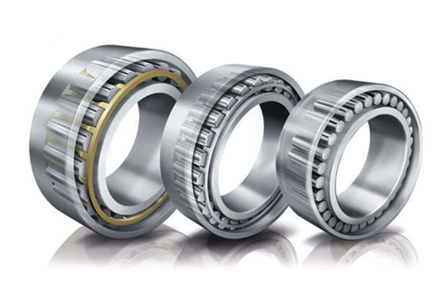Summary:
The accuracy of angular contact ball bearings does not seem to be very high. Is there any way to improve it? The accura...
The accuracy of angular contact ball bearings does not seem to be very high. Is there any way to improve it? The accuracy of rolling bearings can be improved. The following are the four commonly used methods for improving the accuracy of rolling bearings.
1. The amount of rolling load generated during excitation, when a load-bearing radial load, the amount of rolling carried will slightly change in operation, among which: This causes the deviation of the load direction. The resulting vibration is inevitable, but it can be pre-loaded to reduce axial loading of all rolling elements.
2. Partial damage
In operation, the rolling across the damaged bearing component generates a specific vibration frequency. Frequency analysis can identify damaged bearing components. This principle has been used in condition monitoring equipment to detect bearing damage. The temperature will rise sharply, causing abnormally high temperatures. The reasons include too much lubricant, too small bearing clearance, poor installation, and too much friction in the sealing device. In the case of high-speed rotation, the wrong choice of bearing structure and lubrication method is also the reason.
3. The accuracy of relevant parts
The relationship between the shaft and the bearing can be compatible with the shape deformation of the adjacent part when it is in close contact with the bearing ring. If there is distortion during operation, vibration may occur. Therefore, the tolerances required for the machining of bearings and shafts are very important.
4. Pollutants
If you are running in a polluted environment, impurities may enter the rolling bearing. Vibration depends on the number, scale and composition of rolling foreign particles. Although the frequency does not produce a typical form, the reasons are poor lubrication, poor shaft or bearing seat accuracy, bearing damage, foreign matter intrusion, etc., but you can hear an annoying The noise.
Measure the size of the shaft and the bearing seat hole to determine the matching accuracy of the bearing. The matching requirements are as follows: the inner ring and the shaft adopt an interference fit, and the interference is 0~+4μm (0 under light load and high accuracy); Adopt a clearance fit with the bearing seat hole, the amount of clearance is 0~+6μm (but when angular contact ball bearings are used in the free end bearing, the clearance can be increased); the roundness error of the shaft and the seat hole surface is less than 2μm, the spacer used in the bearing The end face parallelism of the shaft shoulder is below 2μm, the runout of the inner end of the shaft shoulder facing the outer end face is less than 2μm; the runout of the bearing seat hole shoulder to the axis is less than 4μm; the runout of the inner end of the spindle front cover facing the axis is less than 4μm.
Installation of the front bearing on the fixed end on the shaft: thoroughly clean the bearing with clean cleaning kerosene. For grease lubrication, first pour an organic solvent containing 3% to 5% grease into the bearing for degreasing and cleaning, and then use a grease gun to clean the bearing. Fill the bearing with a certain amount of grease (accounting for 10%-15% of the bearing space volume); heat the bearing to raise the temperature by 20-30℃, install the angular contact ball bearing into the shaft end with a hydraulic press; press the adapter sleeve on the shaft And use appropriate pressure against the end face of the bearing to make it axially positioned; wrap the belt of the spring balance on the outer ring of the bearing, and use the method of measuring the starting torque to verify whether the specified preload has a large change (even if the bearing is correct , But due to the deformation of the fit or cage, the preload may also change).


